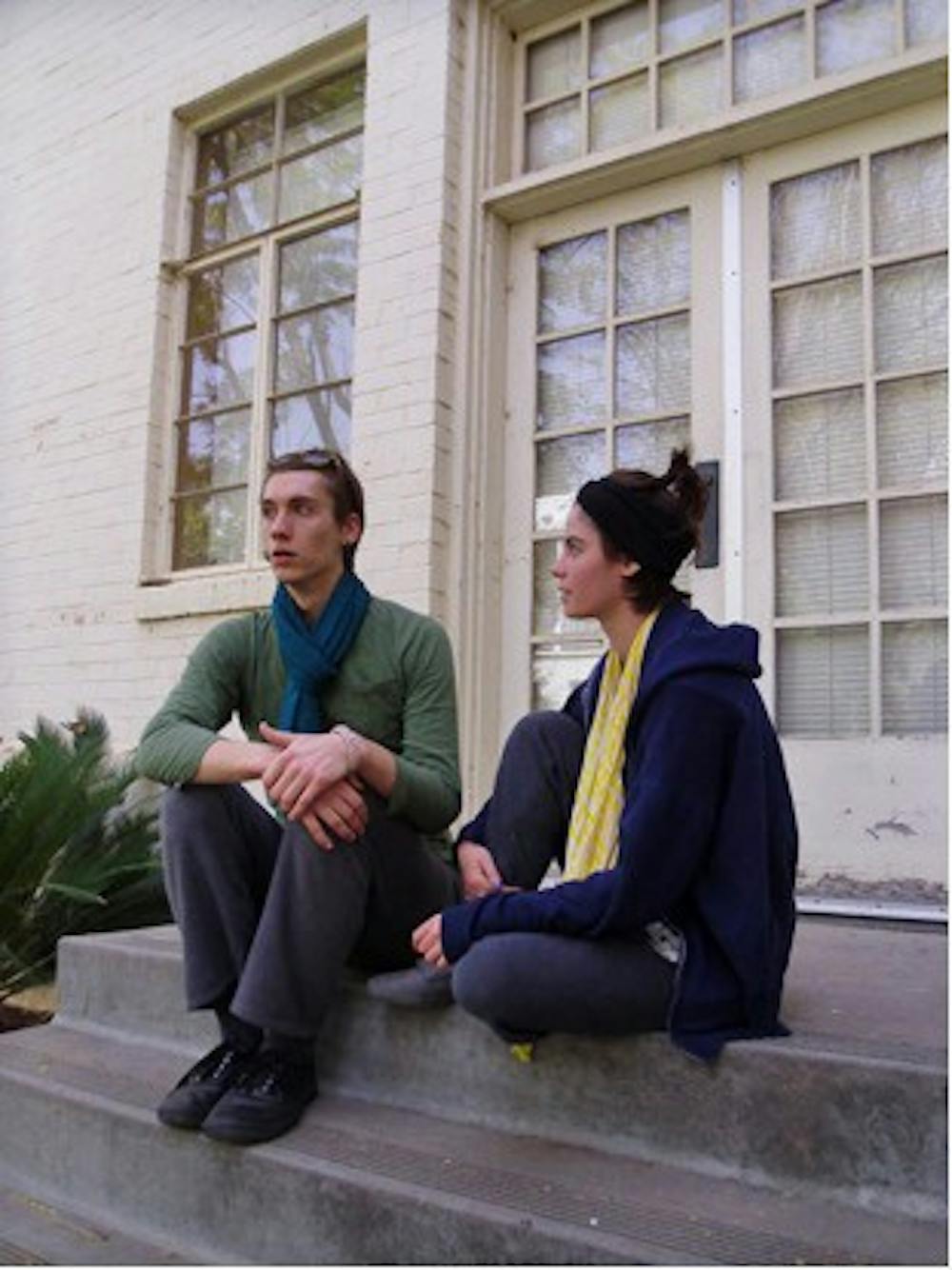While some might dismiss dancers as merely airheads, a conversation with Laura Pellegrino and Anthony Gonzales, two performers in ASU’s Dance Annual, revealed otherwise. Although dance may seem purely physical, this art form involves deep and intellectual thought.
Fascinated by the concept of chance, Pellegrino incorporates randomness into the process of creating her dance films.
She explained, “I think chance brings an extra element and an outside force that is like a partner, like I’m collaborating with chance.”
For Gonzales, the study of dance is the study of language through movement, which ultimately speaks to what he sees as the core of humanity: communication.
In a recent interview, the two discussed their pieces for the upcoming Dance Annual, a compilation show featuring highlights from recent ASU dance concerts, and provided advice for audience members new to dance.
The State Press: Why is dance important?
Anthony Gonzales: Dance is important because it offers an alternative way of communicating. A lot of times the things we work with as people are really hard to communicate through words, and you can sit there and spend hours and days and weeks and months trying to figure out how to say something that’s on your mind or this dream or this thought that you have, and you might never arrive at that place of being able to describe it.
But I think dance is important because it describes it in the physical. It’s not surpassing words. It’s just an alternate to saying something in a different way.
Laura Pellegrino: We learn through dance. The pieces we create we do research for. Mine was about narcissism; his was about string theory and the dimensions. We take the world around us, and that’s how we learn in this process that creates a product — the exploration of a topic.
AG: That process actually is really valuable. It’s the research. My piece, like she said, is about string theory and the dimensions and this idea of multiple dimensions and realms of existence. My thought was, “Well, what would it be like to experience that in the physical, or what would that be like if the human body were in those places?”
LP: My media has been film these last couple years, so this work is a film, and I incorporate myself live as a current reaction of where I am in regards to the work. I studied narcissism and I was interested in what it is to be narcissistic. I guess more of like a self-realm — not judging other people but trying to understand why I constantly think of myself.
SP: What would your advice be to someone who has not attended a dance event before? How should I come into this? What should I expect?
AG: I think the biggest fault that someone can make when entering any performance, when you’re approaching any art, anything really, is to come in with preconceived ideas about what it is that you’re going to see.
I think that a lot of people expect that because dance is dealing with movement, that movement is going to be big or that movement is going to be virtuosic or that movement is going to be something that you couldn’t see every day. But movement is everything, so if you take that into perspective, that’s where a lot of people are coming from — that movement can be anything, that it’s just a matter of physical experience and physical knowledge — then what we’re doing is talking, we’re having a lecture.
You need to come in like, “What does this say to me?” You can experience anything and it’s right. Maybe it’s not what the choreographer was thinking while making the piece, but your experience as an audience is 100 percent valid and true for you, and that’s important to keep in mind when looking at dance.
SP: Is there anything you guys would like to add about the show?
AG: You should talk to dancers and choreographers.
LP: After the show.
AG: Don’t be afraid to approach anybody. If you have a question, ask.
LP: We like to open the dialogue of what it is that we’re doing. I personally am all for, “You hated my piece so much and you were just so disturbed by it? Let’s talk about it.” I’m more than interested to hear as to why, because it’s interesting to me.
SP: Maybe people can dance to you why they didn’t like the show.
AG: That’d be super cool.
LP: I’d enjoy that.
The Dance Annual is March 2 at 6:30 p.m., March 3 at 7:30 p.m., and March 4 at 2:00 p.m. at the Galvin Playhouse. Tickets are $8 for students, $16 for faculty and $18 for general admission. They can be purchased at the Galvin Playhouse box office or at www.dance.asu.edu/events.
Reach the reporter at bscolaro@asu.edu
Click here to subscribe to the daily State Press newsletter.





